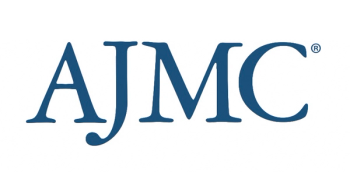
Melanoma: From Impossible to Treat to Poster Child of Promise
AJMC Panel Balances Hope of Recent Breakthroughs Against Rising Costs of Drugs
FOR IMMEDIATE RELEASE
Melanoma: From Impossible to Treat to Poster Child of Promise
AJMC Panel Balances Hope of Recent Breakthroughs Against Rising Costs of Drugs
PLAINSBORO, N.J. — Promising targeted therapies and immunotherapies for melanoma, used in combinations so advanced they have outpaced the nation’s regulators, offer hope of survival to patients suffering from a cancer once seen as a “hopeless” malignancy, according to experts convened by The American Journal of Managed Care. A. Mark Fendrick, MD, co-editor-in-chief of AJMC, led the discussion with the following experts:
- Jeffrey Weber, MD, PhD, senior member, H. Lee Moffitt Cancer Center and director, Donald A. Adam Comprehensive Melanoma Research Center.
- Antoni Ribas, MD, PhD, Jonsson Comprehensive Cancer Center, UCLA.
- Jennifer Malin, MD, PhD, manager and medical director of oncology, WellPoint.
“Melanoma has gone from being regarded by many oncologists in the community as an impossible-to-treat and hopeless malignancy to a disease that one might argue is the poster child for new targeted and immunologic therapies,” Dr. Weber said.
However, these drug combinations are not cheap, and the panelists warned that there is only so much that cancer patients, their employers and those who fund government health plans will be willing to pay. Already, Dr. Ribas warned, some melanoma patients lack access to cutting edge drugs like ipilimumab, depending on where they seek treatment and whether they have appropriate insurance coverage.
New Agents, and New Questions
The discussion opened with a cost-benefit analysis of some of the most promising new agents on the market: vemurafenib, dabrafenib, and trametinib. Drs. Ribas and Weber agreed that using dabrafenib and tramentinib in combination will prove cost-effective, even though right now the latter drug is only approved by the US Food and Drug Administration as a single agent. Dr. Ribas said it won’t be used that way once ongoing clinical trials are complete.
“It’s one of the first examples that I know of in medicine where you have two effective drugs and put them together and they’re not only more effective, but they’re less toxic when you use them together,” he said. When the combination causes fewer side effects, it causes greater benefits for the patient, thus making it more cost-effective even though the patient is taking two drugs instead of a single agent.
Dr. Weber said the oncology community is enthused about the promise of PD-1 and PDL-1 antibodies, nivolumab, lambrolizumab and MDPL, as well as the ongoing success of ipilimumab, even though the verdict is still out on the best dose for this successful CTLA-4 blocking agent.
According to Dr. Weber, the next big questions will involve not just how to use these agents in combination, but what is the proper sequence: Should a targeted agent combination, in pill form, be used first? If so, which one? Or should an immunotherapy be used first? Today, he said, the new question is whether immunotherapies can be used in combination.
Does Cost Limit Access?
Dr. Ribas agreed that the science is moving so fast that clinicians often lack data to treat patients with the latest therapies. And for insurers, that’s the rub. New agents generate excitement, but they also create questions for those who have to decide what to cover, explained Dr. Malin.
“There’s so much innovation and so many exciting new therapies that there aren’t hard data on how to sequence them, and so you really have to rely on experts to provide that kind of guidance to people out there in the community treating patients,” she said.
This is especially true because the therapies are so expensive, Dr. Malin explained. Many small, independent practices that operate on a buy-and-bill basis will be reluctant to bear the risk of a new therapy if they aren’t sure it will be covered, or if they fear the patient cannot absorb the 10 percent coinsurance of drug that costs $120,000. But when care is forced into a hospital setting, the cost rises.
Drs. Weber and Ribas shared their concerns about the high costs of newer drugs; Ribas said he knows that patients at the Los Angeles county hospital near his practice lack access to ipilimumab, and Dr. Weber cited statistics that show Americans are not willing to pay above $150,000 for therapies. Dr. Fendrick cited the recent example of the state of Delaware, where a new law caps co-pays for specialty pharmaceuticals at $150 a month.
Ultimately, Dr. Malin said the cost of cancer therapies is part of the broader question of the overall cost of healthcare; the cost cannot continue to take up ever-rising shares of a family’s budget. Dr. Weber agreed, saying that the oncology community would have to use biomarkers and other means to better target patients for therapies that offered substantial benefit and prolongation of life.
“In order to ensure competition really does have these drugs available at a price that everyone has access to, we’re going to have to use tools like formularies and pathways to highlight where things are equally effective,” Dr. Malin said.
CONTACT: Nicole Beagin (609) 716-7777 x 131
To listen to the full discussion,
Newsletter
Stay ahead of policy, cost, and value—subscribe to AJMC for expert insights at the intersection of clinical care and health economics.




